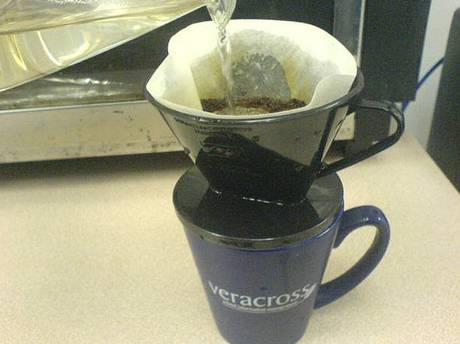Time for coffee and tea
Coffee antioxidants and brewing
Coffee roasts and blends
Recommended Pages
How the Antioxidant Capacity of Coffee is Affected by Brewing
Brewed coffee is consumed as much for its pleasant taste and aroma as for its ability to perk up one’s day. There is a wide variation in the types of coffee and in the manner of its consumption, and these differences are often linked to the social habits of the different countries.
In recent years, coffee has been touted as a source of antioxidants. Recent studies have indicated that coffee constituents like caffeine, the phenolic compounds chlorogenic acids and hydroxycinnamic acids, or compounds formed from Maillard reactions, like melanoidins, have antioxidant properties.
Impact of Roasting Methods on Coffee Compounds
The roasting method can have varying effects on the different coffee compounds. For instance, phenolic compounds may become partially degraded or become part of polymers, as influenced by the roasting conditions. Some other compounds may be developed or enhanced as a result of Maillard reactions, caramelization of the constituent carbohydrates, and pyrolysis of organic compounds.
There have been previous studies that describe the not-insignificant part played by the brewing process in the antioxidant capacity of the coffee brew. The particular brewing procedure may extract the different compounds, like caffeine or polyphenols, in different ways.
Volatile Compounds in Coffee
A study was designed to investigate the relationships between volatile and nonvolatile compounds in coffee, with the variables being the roasting process and the brewing procedure.
Roasting processes compared were conventional roasting and torrefacto. In torrefacto roasting, which uses only Robusta coffee and adds sugar towards the end of the roasting process, it is thought that the sugar may intensify the formation of Maillard reaction products. Three kinds of roasted coffee (of the same brand) were used: conventionally roasted blend of Arabica/Robusta coffees; conventional Arabica/Robusta plus 30% torrefacto-roasted coffee; and, pure 100% torrefacto-roasted Robusta coffee.
The brewing procedures used were by filter coffee machine, plunger coffeemaker, mocha coffeemaker, and an espresso machine. Filtering extraction took 7 minutes at 90 degrees Celsius, and the plunger device kept 98 degree C water and ground coffee in contact for 5 minutes before the plunger was pushed. Extraction time using the mocha coffeemaker was 10 minutes at 93 degrees C, while for the espresso machine it was 30 seconds at 90 degrees. Note that filter coffee is essentially an infusion procedure while the other three utilize pressure; in the case of the espresso machine, it has a pressure of 15 bar which means it can extract more total solids from the ground coffee.
Roasting and Antioxidant Capacity
In all the variations conducted in the trials, the researchers found that the interactions between the roasting process and the brewing procedures were significant. This led them to study further the effect of roasting on each brewing procedure.
 Photograph of brewing coffee in a cup by mroach.
Photograph of brewing coffee in a cup by mroach.
In general, the volatile compounds with antioxidant potential was observed to be higher in conventionally roasted coffee than in pure torrefacto coffee, and the brewing procedures that applied greater pressure (espresso and mocha) extracted more volatiles than the other two. The presence of such powerful antioxidants as 2-methyulfuran and 2-acetylfuran was established but there was no significant correlation with the antioxidant capacity parameters.
Brewing and Antioxidant Capacity
The antioxidant capacity of coffee brews appeared to increase in proportion to the percentage of torrefacto coffee. Previous studies mentioned the enhancement effect of the sugar additions in torrefacto roasting, resulting in more Maillard reaction products. Such products, like melanoidins, contribute significantly to the maintenance of antioxidant activity of coffee brews. Antioxidant capacity in the brewing procedures was highest from espresso then mocha, plunger, and filter being the last. This showed the relevance of pressure utilized in brewing and the coffee/water ratio.